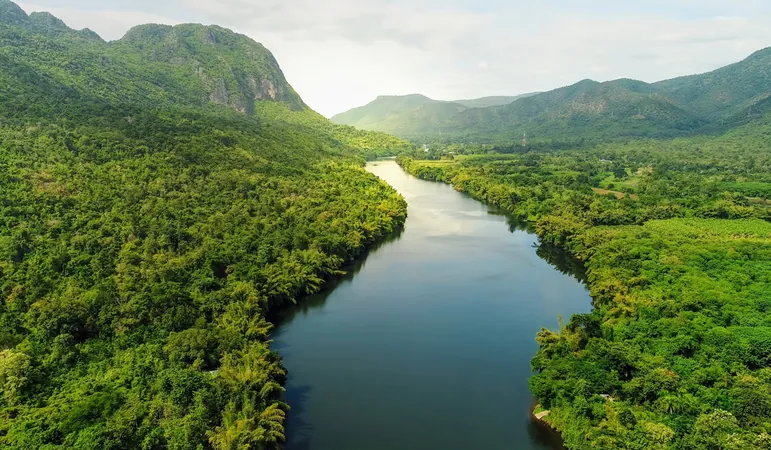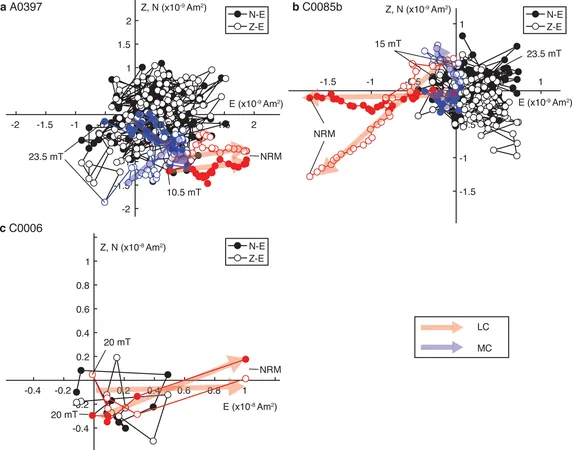
Shocking Truth Revealed: Microplastic Contamination Surges in Freshwater Ecosystems!
2024-11-04
Author: Sophie
The Alarming Findings
An interdisciplinary team of researchers from Penn State has made a significant breakthrough by analyzing microplastic levels in freshwater sediment dating back to the mid-20th century. Their meticulous research revealed a direct correlation between increasing microplastic pollution and the global surge in plastic production that began in the 1950s.
"Our study is one of the first to track microplastic levels from the pre-1950 era to the present day, revealing clear evidence that concentrations have risen alongside plastic manufacturing," explained Nathaniel Warner, an associate professor of civil and environmental engineering.
Microplastics: A Hidden Danger
Microplastics, tiny particles measuring from one hundredth the width of a human hair to the size of a pencil eraser, have now infiltrated even the most remote freshwater ecosystems. The research, which examined sediment cores from four key watersheds in Pennsylvania—including the Kiskiminetas River and Raystown Lake—found that high levels of microplastics were present regardless of population density or land use.
Surprising Trends in Plastic Accumulation
Intriguingly, the study also identified a decline in microplastic accumulation between 2010 and 2020, potentially linked to increased recycling initiatives implemented during that period. The U.S. Environmental Protection Agency corroborated this by reporting substantial growth in plastic recycling efforts between 1980 and 2010.
Unraveling the Mystery of Ocean Trash
The research offers insight into the "missing plastics" paradox—where the estimated volume of plastic waste entering the oceans outstrips the amount visibly floating on the surface. Raymond Najjar, a professor of oceanography, proposes that estuaries, particularly tidal marshes, might act as a trap for plastics carried down rivers, preventing them from reaching the ocean.
"Understanding these dynamics could illuminate why the surface ocean appears less polluted than expected given the input from rivers," Najjar remarked.
A Call to Action: Reducing Plastic Footprint
The study's findings urge immediate action to curb plastic consumption. Warner emphasizes the concerning reality that humans are unwittingly ingesting and inhaling microplastics. "The long-term effects of this exposure are just beginning to be investigated. We must prioritize strategies to minimize plastic release into the environment."
Collaborative Efforts for Future Research
With a diverse team representing five disciplines, including chemistry, oceanography, and soil science, the research showcases a remarkable collaborative effort. Emili highlighted the project's beginnings, funded by an Institute of Energy and Environment seed grant, which has paved the way for continued research focusing on microplastics in freshwater—and coastal—environments.
Warner also expressed a desire to study the evolution of microplastic composition over time and assess the associated health risks, signaling a critical direction for future investigations.
Publication and Future Directions
The study, published in the esteemed journal *Science of The Total Environment*, aims not only to deepen our understanding of microplastic pathways from land to sea but also to inspire viable solutions to combat pollution and protect public health.
As microplastic contamination reaches alarming levels, the world must wake up to this environmental crisis and take immediate action to safeguard our ecosystems for future generations!
Stay informed by subscribing to our newsletter for the latest updates and exclusive content on this pressing issue!









 Brasil (PT)
Brasil (PT)
 Canada (EN)
Canada (EN)
 Chile (ES)
Chile (ES)
 España (ES)
España (ES)
 France (FR)
France (FR)
 Hong Kong (EN)
Hong Kong (EN)
 Italia (IT)
Italia (IT)
 日本 (JA)
日本 (JA)
 Magyarország (HU)
Magyarország (HU)
 Norge (NO)
Norge (NO)
 Polska (PL)
Polska (PL)
 Schweiz (DE)
Schweiz (DE)
 Singapore (EN)
Singapore (EN)
 Sverige (SV)
Sverige (SV)
 Suomi (FI)
Suomi (FI)
 Türkiye (TR)
Türkiye (TR)